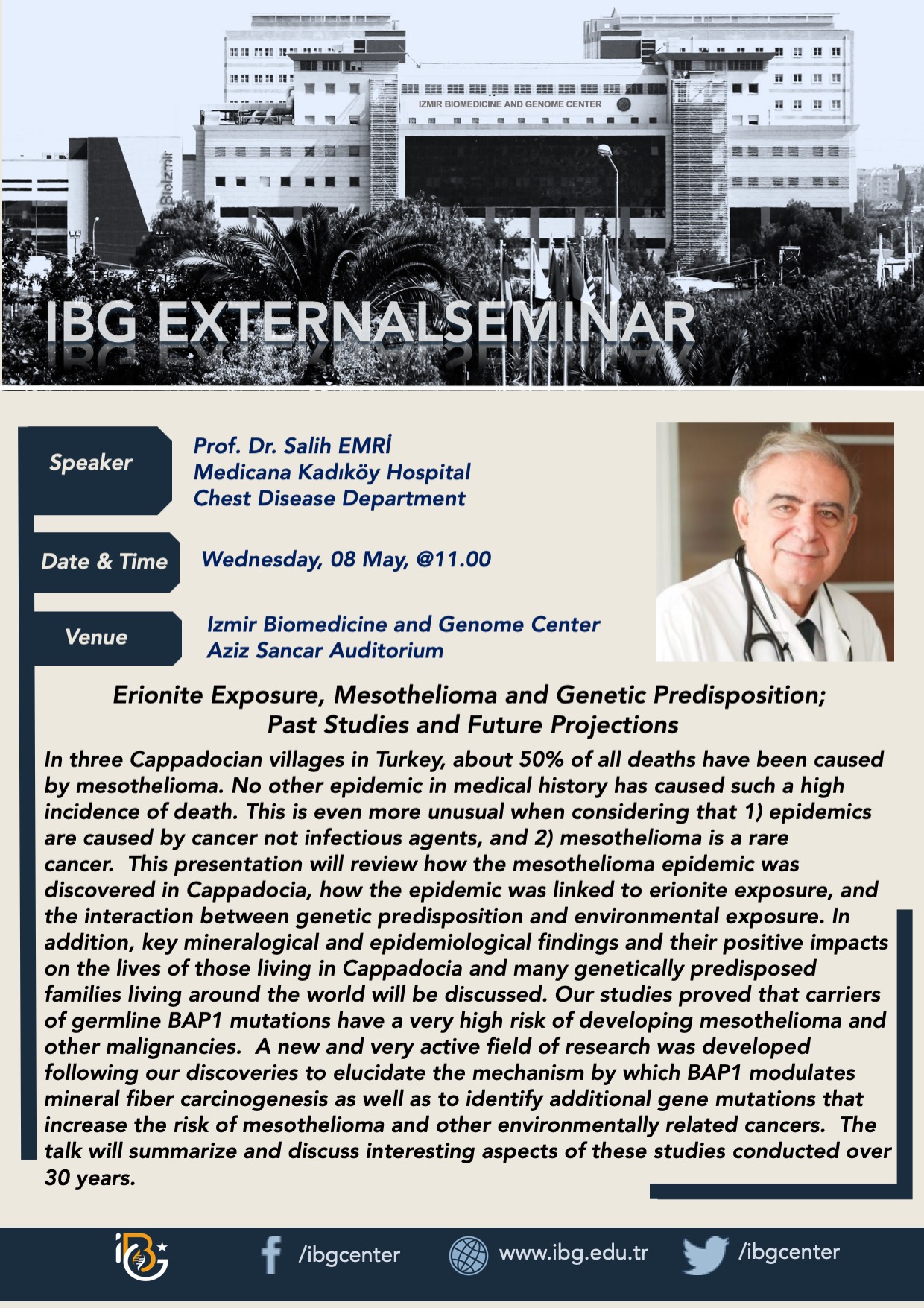Erionite Exposure, Mesothelioma and Genetic Predisposition; Past Studies and Future Projections
In three Cappadocian villages in Turkey, about 50% of all deaths have been caused by mesothelioma. No other epidemic in medical history has caused such a high incidence of death. This is even more unusual when considering that 1) epidemics are caused by cancer not infectious agents, and 2) mesothelioma is a rare cancer. This presentation will review how the mesothelioma epidemic was discovered in Cappadocia, how the epidemic was linked to erionite exposure, and the interaction between genetic predisposition and environmental exposure. In addition, key mineralogical and epidemiological findings and their positive impacts on the lives of those living in Cappadocia and many genetically predisposed families living around the world will be discussed. Our studies proved that carriers of germline BAP1 mutations have a very high risk of developing mesothelioma and other malignancies. A new and very active field of research was developed following our discoveries to elucidate the mechanism by which BAP1 modulates mineral fiber carcinogenesis as well as to identify additional gene mutations that increase the risk of mesothelioma and other environmentally related cancers. The talk will summarize and discuss interesting aspects of these studies conducted over 30 years.
